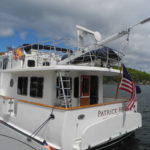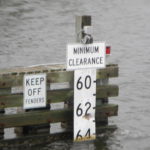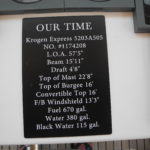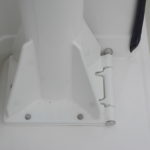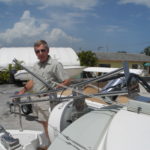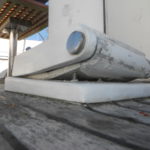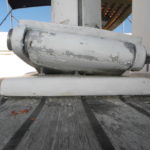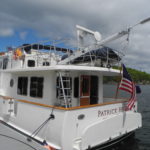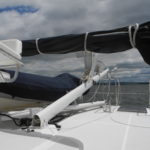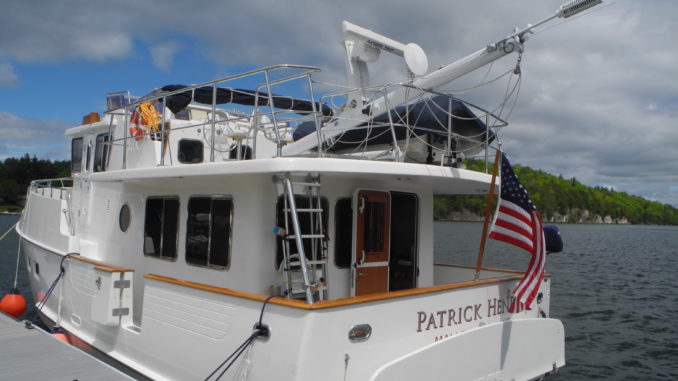
Minimally, you must get your highest point of your boat to be less than 19 feet 7 inches when on the Great Loop. So, how do you get your RADAR mast under those low fixed bridges?
First consider your route. While on the Erie Canal to Oswego Canal, fixed bridges are about 20 feet air clearance. On the Western Erie Canal towards Buffalo, NY the fixed bridges are about 15 feet air clearance. And on the Champlain Canal fixed bridges are about 17 feet.
Next consider the height of your boat. To accurately measure the highest part of your boat be sure to include the Anchor Light although some radio antennas may be taller. Even when you ask for a bridge to open, you must have lowered all appurtenances…yup, that word is really written on some bridge signage. It means accessories such as antenna or flag poles must be lowered. It doesn’t mean you must break out the tool box and crawl on your roof to disassemble things.
So, make sure your boat can fit under the fixed bridge clearance without touching or colliding and breaking something off your boat. Most radio antennas have a folding mount so the questionable item may be your RADAR arch or mast. Some boats even have folding masts as a factory original item like Grand Banks trawlers while others may not. Some power boats have a mast to support a boom and winch to handle launching and recovery of a dinghy. You and your mate can usually lower and raise the mast with minimal effort. Of course the first time involves a learning curve but the next few times become easier. Regardless of whether it is a mast, arch or antenna, does your highest point clear or should you consider a folding design to lower the tall item, clear the bridge and then raise it back up?
And a great idea is to post an elevation placard on the dashboard to remind you of the different elevations of accessories.
When shopping for your LOOPER boat take into account during the buying process if the boat will fit your route bridge clearance or will you be able to hire a marine welder to build a hinging mechanism to fold the mast or arch down.
Most important, do not believe the nautical charts for air clearance under bridges. These air gaps are posted as the bridge was designed at MHW (mean high water) and DO NOT take into account extra high tides or flood conditions. Check the elevation board on the starboard as you approach the bridge. If the board is missing or not seen then it becomes a game to idle up to the bridge and check the clearance yourself.
To learn more on fixed bridges and draw bridges check out our Training DVDs, Bridges.
Scroll down and take a look at some of the folding designs we have seen and one that forgot to drop their mast, ouch! Browse through our photos and be sure to watch the entire 5 minute video. We install the boom after securing the mast with the four cables….and it only took 5 minutes the first time we did it….really!

